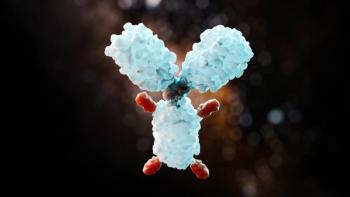
Melanoma Drug Shows Manageable Side Effects
Nivolumab has increased the survival rate in patients with low grade adverse events.
Nivolumab has increased the survival rate in patients with low grade adverse events.
A promising monoclonal antibody for the treatment of melanoma was found to have a manageable safety profile during a recent study.
Nivolumab, which targets the programmed death-1 (PD-1) receptor protein, has been found to improve the survival rate in melanoma patients. The PD-1 pathway controls the immune system by blocking inadvertent immune cell activation and autoimmune disease.
The protein is found on T cells, as the ligand PD-L1 is expressed on antigen presenting cells. Replication and immune cell activity is inhibited by the binding of PD-L1 to PD-1, which stops an immune response.
Melanoma cells show high levels of PD-L1 to avoid immune detection, which increases the survival potential of cancerous cells.
Researchers from the Moffitt Cancer Center examined data from 576 melanoma patients treated with at least 1 dose of nivolumab. The results showed that drug-related adverse events were primarily low-grade, with the most common adverse events reported as fatigue (25%), pruritus (17%), diarrhea (13%), and rash (13%).
The researchers found grade 3/4 adverse events in 10% of patients. The study showed that previous treatment with the CTLA-4 inhibitor ipilimumab did not impact adverse event incidence with nivolumab.
Immunomodulatory drugs were found to resolve toxicity in 166 out of 474 patients in phase 3 studies, while 114 patients received corticosteroids. Resolution of symptoms had a median time of resolution at 3 weeks for hepatic adverse events and 29 weeks for adverse events that affected the skin.
One patient out of 21 patients with a select grade 3/4 adverse event did not reach a resolution after treatment with immunomodulatory drugs, which also did not impact response rates.
The results showed 44% of patients treated with an immunomodulatory drug for an adverse event responded to therapy, while 36% of patients who were not treated with an immunomodulatory drug responded.
Newsletter
Stay informed on drug updates, treatment guidelines, and pharmacy practice trends—subscribe to Pharmacy Times for weekly clinical insights.
















































































































































































































